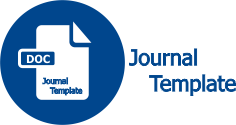The Importance of Integrating Education for Sustainable Development in Global Warming Assessments to Improve Students' Critical Thinking Skills
DOI:
https://doi.org/10.24036/jppf.v11i2.23Keywords:
Assessment, Critical thinking skills, ESD, Physics, Wizer.meAbstract
This study analyzes the need to develop a critical thinking skills assessment integrated with Education for Sustainable Development (ESD) in physics learning to support SDG 13: Climate Action. In the 21st century, students must possess not only conceptual understanding but also critical thinking abilities to address global environmental challenges. Using a descriptive quantitative approach, the research involved 33 Grade X Phase E students through Ennis-based critical thinking tests, student questionnaires, and teacher interviews. Findings revealed that students’ critical thinking skills were mostly in the moderate to low range, with the lowest performance on the “advanced clarification” indicator, indicating difficulty in connecting physics concepts to real-life phenomena. However, students demonstrated good sustainability awareness (71.9%–75.17%) and strong technological skills (80.57%), suggesting readiness for digital-based assessments. The ESD dimension analysis indicated effective integration of environmental, cultural, economic, and social aspects in fostering climate action. Teacher interviews confirmed that existing assessments inadequately measure critical thinking and ESD linkages. Therefore, developing an electronic assessment using the Wizer.me platform is essential to enhance critical thinking and sustainable awareness in global warming topics. This innovation supports transformative and holistic learning that empowers students to contribute actively to achieving SDG 13 Climate Action.
Downloads
References
Agusti, K. A., Wijaya, A. F. C., & Tarigan, D. E. (2019). Problem Based Learning Dengan Konteks Esd Untuk Meningkatkan Keterampilan Berpikir Kritis Dan Sustainability Awareness Siswa Sma Pada Materi Pemanasan Global. VIII, SNF2019-PE-175–182. https://doi.org/10.21009/03.snf2019.01.pe.22
Amalissholeh, N., Sutrio, S., Rokhmat, J., & Gunada, I. W. (2023). Analisis Kesulitan Belajar Peserta Didik pada Pembelajaran Fisika di SMAN 1 Kediri. Empiricism Journal, 4(2), 356–364. https://doi.org/10.36312/ej.v4i2.1387
Asniar, A., Nurhayati, N., & Khaeruddin, K. (2022). Analisis Keterampilan Berpikir Kritis Dalam Pembelajaran Fisika Peserta Didik Di Sman 11 Makassar. Jurnal Sains Dan Pendidikan Fisika, 18(2), 140. https://doi.org/10.35580/jspf.v18i2.31622
Bahasa, A. J., Tsabita, H., Ahmadi, A., & Raharjo, R. P. (2024). Pemanfaatan Media Wizer . me sebagai Alat Evaluasi Pemahaman Siswa dalam Pembelajaran Bahasa Indonesia. 7, 450–457.
Dasar, S., & Yolanita, C. (2024). Penerapan Education for Sustainable Development ( ESD ) dalam Media. 81–88.
Durango-Urrego, J. H., Castro, W. F., Goizueta, M., & López, C. M. J. (2023). Assessment of students’ understanding of physical phenomena through argumentative qualities of written texts. Eurasia Journal of Mathematics, Science and Technology Education, 19(3). https://doi.org/10.29333/ejmste/12993
Ekamilasari, E., Permanasari, A., & Puspitasari, I. D. (2021). Critical thinking skills and sustainability awareness for the implementation of education for sustainable development. Journal of Science Education Research Journal, 5(1), 46–53. www.journal.uny.ac.id/jser
Ennis, R. (2011). Critical Thinking: Reflection and Perspective Part II. Inquiry: Critical Thinking Across the Disciplines, 26(2), 5–19.
Guisasola, J., Campos, E., Zuza, K., & Zavala, G. (2023). Phenomenographic approach to understanding students’ learning in physics education. Physical Review Physics Education Research, 19(2), 20602. https://doi.org/10.1103/PhysRevPhysEducRes.19.020602
Hamidah, L. W., Saputra, O. D., & Abadi, M. (2023). Keefektifan Wizer.Me sebagai Media Evaluasi dalam Pembelajaran Bahasa Indonesia pada Teks Cerita Pendek di SMP Negeri 1 Singosari. Pedagogika: Jurnal Ilmu-Ilmu Kependidikan, 3(2), 188–196. https://doi.org/10.57251/ped.v3i2.1168
Harmawati, Y., Sapriya, Abdulkarim, A., Bestari, P., & Sari, B. I. (2024). Data of digital literacy level measurement of Indonesian students: Based on the components of ability to use media, advanced use of digital media, managing digital learning platforms, and ethics and safety in the use of digital media. Data in Brief, 54. https://doi.org/10.1016/j.dib.2024.110397
Lestari, I., B.K Gultom, O., & Saputri Zebua, F. (2022). Penerapan Literasi Sains Dalam Pembelajaran Fisika Di Era Society 5.0. Jurnal Inovasi Pendidikan Sains Dan Terapan (INTERN ), 1(2), 92–98. https://doi.org/10.58466/intern.v1i2.1449
Linda, Z., & Lestari, I. (2019). Berpikir Kritis Dalam Konteks Pembelajaran. In Erzatama Karya Abadi (Issue August).
Nurhasanah, Supahar, Agustina, E., Nabila, S. A., & Rahayu, P. (2021). Developing Physics Digital Literacy Skill Diagnostic Test Assisted by Google Form for Senior High School Students. Proceedings of the 6th International Seminar on Science Education (ISSE 2020), 541(Isse 2020), 343–349. https://doi.org/10.2991/assehr.k.210326.049
Pusmenjar. (2020). Desain Pengembangan Soal Asesmen Kompetensi Minimum. Kementerian Pendidikan Dan Kebudayaan, 1–125.
R. Kelley, T., Geoff Knowles, J., Han, J., & Sung, E. (2019). Creating a 21st Century Skills Survey Instrument for High School Students. American Journal of Educational Research, 7(8), 583–590. https://doi.org/10.12691/education-7-8-7
Ramadhani, T. N., & Wasis. (2024). Asesmen Keterampilan Berpikir Kritis Peserta didik SMA pada Materi Fluida Statis Melalui Asessment For Learning. 7, 11455–11466.
Redecker, C., & Johannessen, Ø. (2013). Changing Assessment - Towards a New Assessment Paradigm Using ICT. European Journal of Education, 48(1), 79–96. https://doi.org/10.1111/ejed.12018
Riduwan. (2015). Belajar Mudah Penelitian untuk Guru, Karyawan dan Peneliti Pemula. Alfabeta.
Simanjuntak, E., Mulya, H. C., Engry, A., & Alfian, I. N. (2025). Dataset of digital literacy of university students in Indonesia. Data in Brief, 58(December). https://doi.org/10.1016/j.dib.2024.111227
Sundari, P. D., & Sarkity, D. (2021). Keterampilan Berpikir Kritis Siswa SMA pada Materi Suhu dan Kalor dalam Pembelajaran Fisika. Journal of Natural Science and Integration, 4(2), 149. https://doi.org/10.24014/jnsi.v4i2.11445
Syarqiy, D., Yuliati, L., & Taufiq, A. (2023). Exploration of Argumentation and Scientific Reasoning Ability in Phenomenon-Based Argument-Driven Inquiry Learning in Newton’s Law Material. Jurnal Penelitian Pendidikan IPA, 9(9), 7264–7272. https://doi.org/10.29303/jppipa.v9i9.4589
Ubaidillah, M., Hartono, Marwoto, P., Wiyanto, & Subali, B. (2023). How to Improve Critical Thinking in Physics Learning? A Systematic Literature Review. In Journal of Educational, Cultural and Psychological Studies (Vol. 2023, Issue 28). https://doi.org/10.7358/ecps-2023-028-ubai
Velempini, K. (2025). Assessing the Role of Environmental Education Practices Towards the Attainment of the 2030 Sustainable Development Goals. Sustainability (Switzerland), 17(5), 1–20. https://doi.org/10.3390/su17052043
Walsh, C., Quinn, K. N., Wieman, C., & Holmes, N. G. (2019). Quantifying critical thinking: Development and validation of the physics lab inventory of critical thinking. Physical Review Physics Education Research, 15(1), 1–16. https://doi.org/10.1103/physrevphyseducres.15.010135
Published
Issue
Section
License
Copyright (c) 2025 Sri Ramadhani Dar, Emiliannur, Festiyed, Selma Riyasni, Nanang Winarno (Author)

This work is licensed under a Creative Commons Attribution 4.0 International License.





